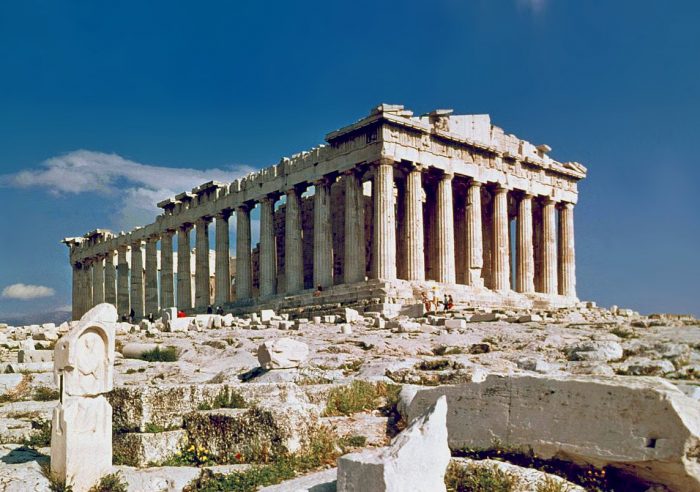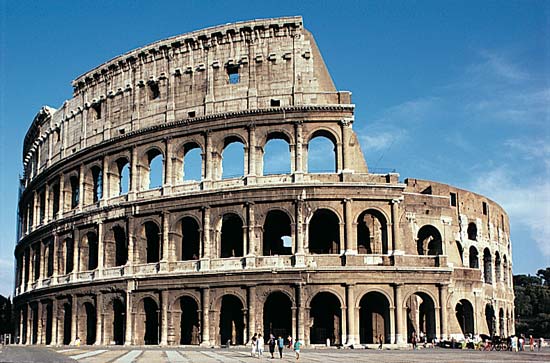
- Permbajtja
- prev
- next
- prev
- next
5 MAIN ORDERS IN CLASSICAL ARCHITECTURE
The column is the element which has accompanied architecture since its genesis, an element that surpassed the reasons of its birth and throughout history has become one of the main elements of architecture.
What types of classical architecture columns are there? Which are their distinctive features?
The column's origin is found in ancient Egypt, but it was ancient Greece which gave this element a great momentum to develop.
Before the Greeks discovered marble, they build their temples with wood. With the "discovery" of marble, they surpassed the Egyptians, who realized their columns with limestone.
It was the Romans who later enhanced the column both structurally and aesthetically. Often, overpassing its primary role as a structural element, the column comes with an aesthetic veil that unfolds the economic/historical development of the period in which it was used.
The column, however refined, remains a basic tool to express absolute power![1]
Basically the column is a vertical supporting element consisting of three parts:
Base
Body
Capital
There are 5 main classical architectural order, three of which were born in the ancient greek civilisation. Order is a special building style in classical architecture that differentiate from the plinth, capital columns and entablement.
DORIC ORDER
The simplest classical column, the Doric Order arose during the seventh century BC from which the other orders derive.
Named after the Dore tribes, this column has no base and rests on Stylobate (a continuous base supporting a row of columns in classical Greek architecture)
The oldest and most simple of the Greek Classical Orders, the Doric Order arose during the seventh century BC.
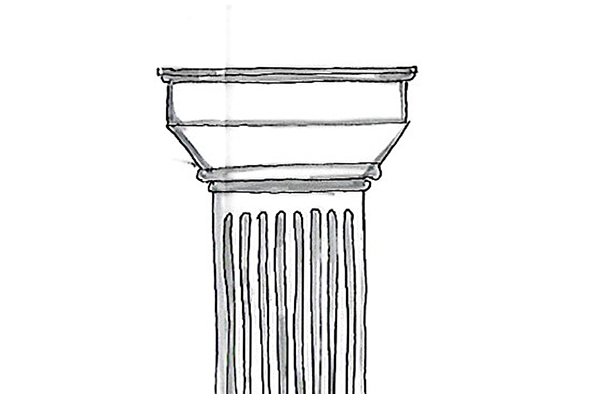
You can find the Doric order at Partenon Temple in Athens.
https://en.wikipedia.org/wiki/Parthenon
With rudimentary lines and aesthetics based on the proportions of the male body and its robust archetype, it was employed in Greek buildings in honor of male deities. In Vitruvius' words, the Doric exemplifies "proportion, strength and grace of the masculine body", denoting balance, and for him, it should be used in "churches dedicated to the most extroverted saints (St. Paul, St. Peter or St. George)."
In Greek architecture, the design of the capitals is also arranged as a function of the distribution of loads to the column so, through its simplified design, the Doric order suits lower buildings, as its height is 8 times its width.[2]
TUSCAN ORDER
Conceived by the Romans, this order is a reinterpretation of the Doric order. At seven column widths in height—one width less than the Doric column—it presents formal simplicity and therefore also structural simplicity. For Vitruvius, it is "suitable for fortifications and prisons." [2]
Unlike the three models of Greek origin, where the shaft is fluted, in this order the shaft is smooth, aiming at simplification.

IONIC ORDER
This order is distinguished by its capitals with volutes (Spiral ornament or a twisted form at the capital's corners)
The Ionic order originated in Asia Minor in the mid-twentieth century. With light, fluid organic lines, this order alludes to the lines of the female body, characterised by "feminine slenderness," according to Vitruvius
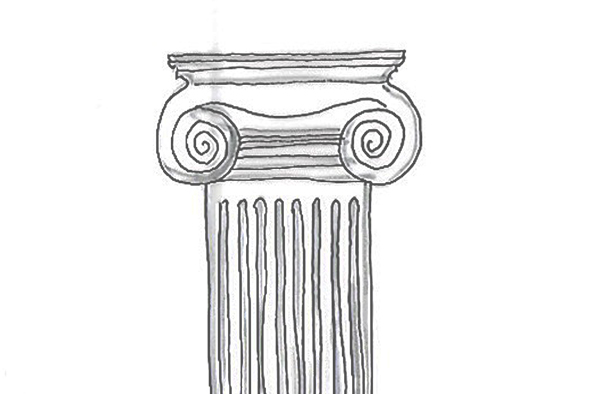
Oriental influences are seen in the capital design, such as carvings of palm leaves, papyrus and vegetable leaves, possibly inspired by Egyptian architecture. The columns are about nine times as tall as they are wide—a width larger than the Doric Order. For Vitruvius, they should be used in temples dedicated to "quiet saints—neither too strong nor too soft—and for men with know-how." [7] In composition, this order presents a broader base, allowing to receive greater load; a slender shaft which widens slightly as it reaches the base; and capitals with scrolls (volutes). It is worth mentioning that in some works, capitals of this order are replaced by caryatids—female figures carved into the stone, supporting the entablature.
CORINTHIAN ORDER
As the most refined style of the three models based on Greek design, this order presents a series of details and designs highly thought out and elaborated to imitate the "thin figure of a girl," as Vitruvius explains it. Sprouts and leaves of acanthus characterise the three-dimensional drawing of sculptural stone. It is ten times as tall as it is wide, the thinnest of the three columns.[2]
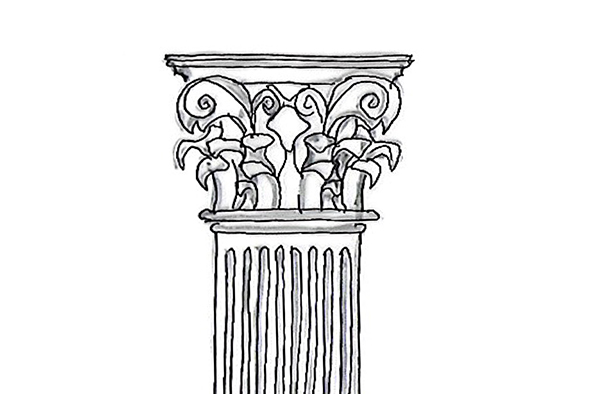
"The third order, called Corinthian, is an imitation of the slenderness of a maiden; for the outlines and limbs of maidens, being more slender on account of their tender years, admit of prettier effects in the way of adornment."
COMPOSITE ORDER
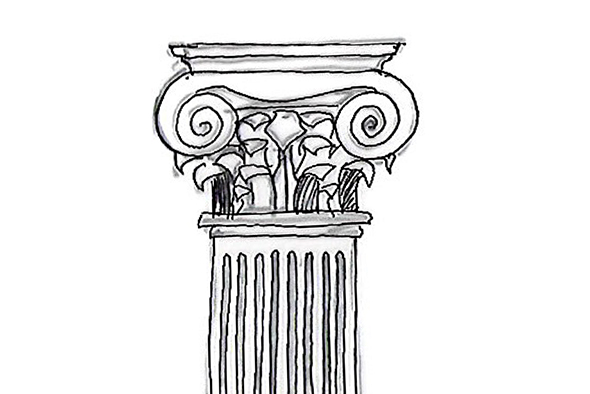

These are one of the main elements of classical architecture so you can easily distinguish them in classic buildings!
Here is a building that you can admire find three of the 5 main orders of classical architecture: The Colosseum in Rome!
The Colosseum was conceived as a testament to the power of Rome. At the time of its completion, it was the most complex man-made structure in the world and one of the largest.
All three of the major architectural orders of the time were represented:
-
The ground floor columns were done in the Tuscan style, a Roman variation on the austere Greek Doric order.
-
The second floor featured slightly more elaborate Ionic order.
-
The third floor employed the more intricate and decorated Corinthian order.
The orders used in the Colosseum
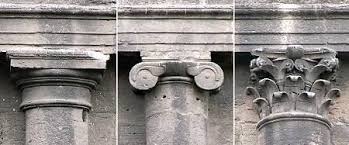
Sources for this article :
[1] Domus Reflection /making architecture by /The strength of the collumn " 042 by Nik RYS.
[2] https://www.archdaily.com/892595/capitals-of-classical-antiquity-understand-the-difference-between-the-5-orders
[3] https://www.classicist.org/articles/classical-comments-the-composite-order-an-overview/#_edn2
[4] Fjalori Terminologjik për historinë e arkitekturës nga Dr.Vera Bushati
